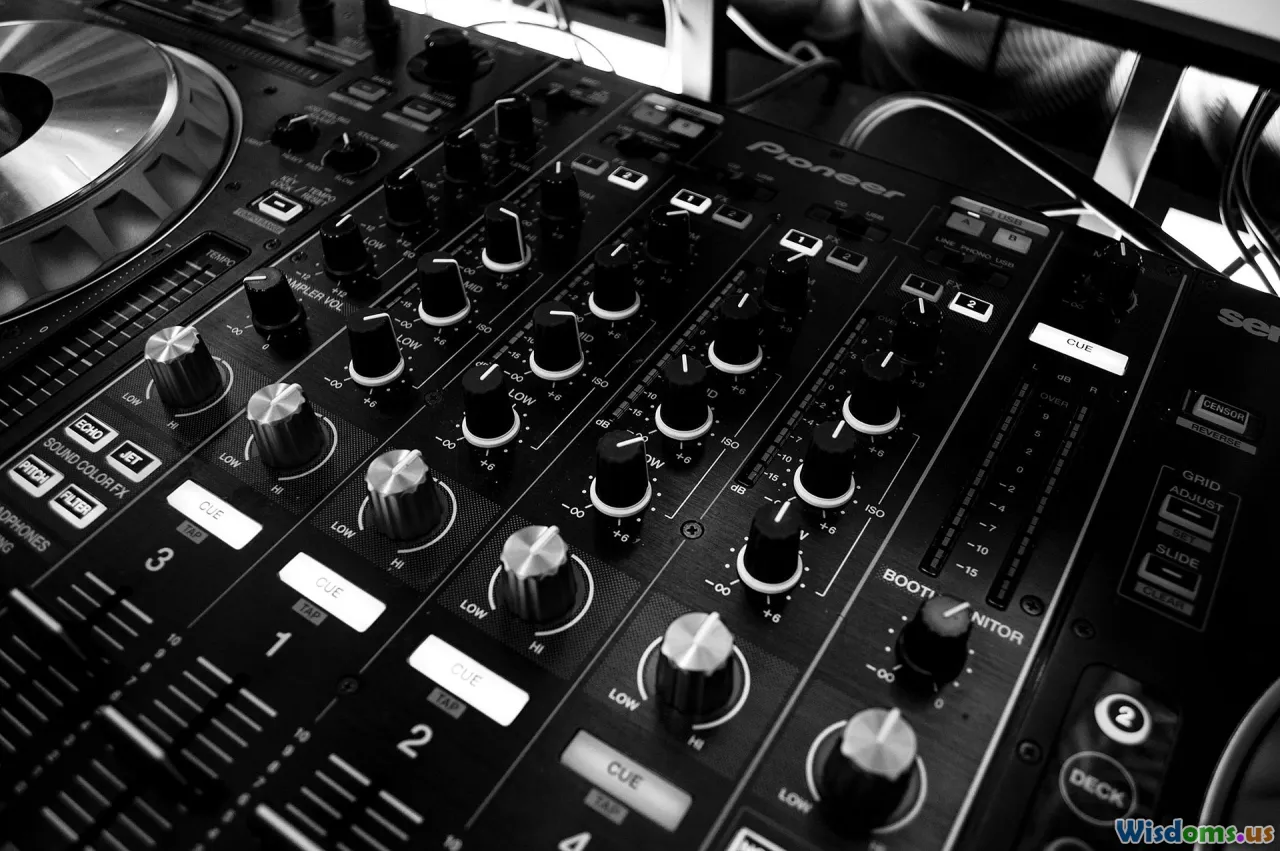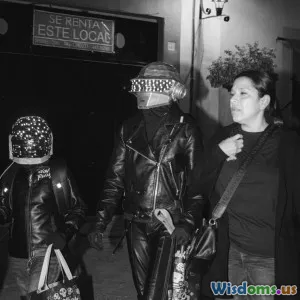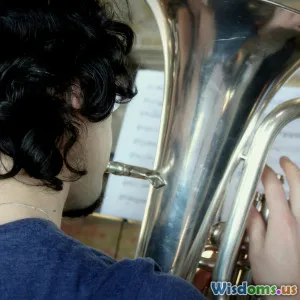
How to Fix Clipping Issues in Your Mix Fast
16 min read Master quick, effective strategies to detect and remedy audio clipping in your mix with actionable tips, practical examples, and insights for cleaner, professional-sounding music. (0 Reviews)
How to Fix Clipping Issues in Your Mix Fast
Mixing music isn’t just about faders, EQ, and reverb—it’s about clarity, impact, and a polished, competitive sound. Yet even the best mixes can be ruined by a notorious and surprisingly common problem: clipping. If you’ve ever felt your track sounds harsh, loses detail, or distorts when you crank the volume, you’re facing the tell-tale signs of clipping.
But what is clipping, why does it matter, and most importantly—how can you fix it fast? Get ready for straightforward, practical techniques backed by real-world experience, compelling examples, and actionable tips. By the end, you’ll be equipped to banish clipping from your mixes and elevate your music to professional standards without missing a beat.
Why Clipping Matters: The Enemy of a Clean Mix
“Clipping is the result of pushing your signal past its limit,” says Grammy-winning mixer Chris Lord-Alge. “You lose headroom, compromise punch, and add distortion you never wanted.”
Clipping happens when your audio signal exceeds the maximum capacity (or “ceiling”) of your DAW, audio interface, or any part of your signal chain. When that occurs, the waveform gets “clipped” at the top or bottom instead of being faithfully reproduced, resulting in digital distortion. This manifests in several strikingly obvious and subtly damaging ways:
- Earsplitting distortion (abrupt crackling, crunchiness)
- Lost transients and definition
- Ear fatigue for listeners
- Overly harsh and unnatural timbre
- Diminished impact in mastering or streaming
Let’s take a practical example. Suppose you’re mixing a pop track with energetic drums. If the accumulated signal level at the mix bus occasionally spikes above 0dBFS (the digital ceiling), you’ll see your meters turn red. Playback at this moment will sound squashed, with the snare drum turning brittle or even vanishing behind digital noise. Not only does it impair musicality and translation, but most streaming services (like Spotify and Apple Music) will penalize your track’s loudness, making it sound comparatively quieter next to others.
In a 2023 Sound on Sound survey, 41% of home-recording musicians identified unwanted clipping as their number one mixing problem.
How to Detect Clipping: Don’t Let the Red Lights Fool You
Know Your Signal Path
Clipping can sneak into your mix at various stages—individual tracks, buses, subgroups, plugins, the stereo out. To fix it, you first need to detect where it’s happening.
Step-by-Step:
- Check your DAW meters: Ignoring red meters won’t make clipping go away! Watch the cumulative output levels on channels and buses alike.
- Use dedicated analyzers: Tools like Waves’ PAZ Analyzer or iZotope Insight visually display digital peaks beyond 0dBFS.
- Solo investigator: Solo each track and subgroup while listening for crunch or loss of detail, classic hallmarks of clipping.
- Check throughout the chain: Clipping can happen at the input of a plugin, its output, or after gain staging. Look for control sections marked “in” or “out,” and watch their meters for overload.
PRO TIP: Many DAWs like Ableton Live, Logic Pro X, and Cubase allow you to reset meters so you can easily catch exactly when and on which channel the clipping occurs upon playback.
Audible Signs of Trouble
Beyond meters, trained ears are your best allies. Here are sonic signs of clipping:
- Abrupt crackling, fizz, or sharp sizzle (especially obvious on transients like kicks or snares)
- A “pumping” sensation where the mix sounds squashed at high peaks
- Loss of depth—reverbs and echoes sound harsh or “chopped” off
- Listener fatigue after just a few minutes
Recording engineer Sylvia Massy tells us, “The best engineers learn to trust both their meters and their ears. Sometimes, subtle digital clipping hides where meters won’t always catch it.”
Fast Fixes: Immediate Steps to Eliminate Clipping
Now that you can identify clipping, let’s walk through actionable and speedy solutions tailored for real-world sessions.
1. Reduce Signal Levels (Gain Staging)
Before loading up on fancy plugins, check your levels:
- Lower fader levels: Bring down the volume of offending tracks or buses.
- Adjust clip gain/pre-fader gain: Many DAWs offer per-clip gain or preamp simulators to lower the signal before it hits effects.
- Recheck after level changes: Sometimes a 2-3dB reduction on one peaking track solves your entire mix bus problem
“A mix is like cooking. If you overseason at the start, it’s almost impossible to fix after. Get your levels right first!” – Ken Lewis (Mix Engineer, BTS, Eminem)
Example:
Say your drum bus pokes above 0dB during the chorus. Lower its output by 3dB, then check if the mix bus no longer overloads. Small, interconnected tweaks usually add up to big improvements!
2. Rebalance with Automation
Clipping often appears during intense sections—choruses, drops, build-ups.
- Automate volume curves: Bring down the loudest moments instead of cutting the whole track’s volume.
- Use region-based or lane serial automation: Tame peaks only where needed, preserving the energy of the rest of your song.
Quick-Tip:
In Logic Pro, the “Gain” plugin lets you automate additional gain on problematic regions, mitigating spikes while leaving the rest untouched.
3. Utilize Limiters—But Don’t Rely Solely On Them
A transparent brickwall limiter prevents absolute overload by catching the highest peaks. But it shouldn’t replace healthy gain staging:
- Put a limiter as a safety blanket on the stereo out. Set the ceiling to -0.1dB or -0.3dB for absolute protection.
- Adjust the threshold so it’s only catching occasional, unavoidable peaks. If it’s squeezing “all” the time, revisit step 1!
- Good limiters to try: FabFilter Pro-L2, Waves L2, or even free options like LoudMax can handle mix-bus emergencies.
Real-World Case Study:
UK indie producer Sam Battle (Look Mum No Computer) points out, “A limiter should be your airbag, never your brakes!” When mixing an energetic synthwave track, careful fader balancing reduced average bus levels, meaning the mastering limiter barely touched the peaks, preserving clarity and punch.
4. Address Hot Plugins and FX Chains
Certain plugins (compressors, saturators, reverbs) can amplify the incoming signal.
- Gain staging within plugin chains matters. Always check input and output controls, especially after distortion, amp sims, or aggressive EQ boosts.
- Normalize levels: Some plugins allow for automatic or manual trimming of their output—set this so the signal leaves at a similar level to its entry.
- Bypass check: Temporarily turn off plugins in sequence. If clipping vanishes, reintegrate—with adjusted outputs.
Example:
You run a vocal chain with a compressor into a saturator into EQ. Observe not just the DAW channel, but each plugin’s input and output meters. If clipping occurs after saturation, trim its output so the EQ doesn't receive an overloaded signal.
5. Fix Problem Instruments at the Source
Sometimes, sound sources (samples, soft synths, guitar DIs) are recorded or rendered too hot.
- Re-bounce/export at lower levels
- Check sample headroom: Some commercially available loops or instrument samples are already processed to the max—load into an audio editor and lower their gain before mixing.
Notable Data
A 2022 survey by Izotope revealed that 36% of mix engineers experience frequent mixing issues due to hot samples and loops, especially from online marketplaces advertising “radio ready” packs.
Bonus Fixes: Fast Moves for Advanced Mixes
6. Employ Peak Softening Saturation (With Caution)
Tape and analog-simulation saturators can “round off” harsh digital peaks.
- E.g., UAD Studer A800, Softube Tape, or Waves J37 are popular choices.
- Set a gentle drive so only the highest peaks are softened, not the overall timbre.
7. Utilize Clipper Plugins (If Needed)
Sometimes a purposely-applied soft clipper can tame uncontrolled transients more musically than a regular limiter.
- Examples: Oxford Inflator, Kazrog KClip.
- Use these judiciously on drums or master only after all previous fixes are exhausted.
WARNING: Soft clipping adds coloration and potential harmonics—it’s not transparent, but can create perceived loudness if used tastefully (popular on modern hip-hop drums).
Proactive Strategies: Build a No-Clipping Mix Environment
Getting rid of clipping during mixing is great, but building habits and environments that make it unlikely in the first place will keep your music more creative and less frustrating.
A. Start With Conservative Levels
When you begin mixing, set track levels so that, with all faders at unity (0), your total mix hits around -10dB to -6dB on the master bus in LUFS (loudness units relative to full scale). This gives plenty of headroom, even if instrumentation builds.
Pro Mixers Aim For:
- Bouncing stems at -6dB peak, not “hot” at 0dB
- Avoiding riding meters into the red, even “just a little”—digital is not analog
B. Keep an Eye (and Ear) on Every Stage
Always check input, internal, and output levels altogether:
- Instrument or Mic (recording): Avoid peaking past -3dB on the way in.
- Plugins: Match input and output wherever possible.
- Group/Buss tracks: Ensure no subgroup is redlining, especially with stacked vocals or multi-mic drums.
- Master Out: Absolute max peak should be set to -0.3dB or lower, especially for distribution.
C. Calibrate with Reference Tracks
LOUDEST commercial tracks are mastered to just below 0dBFS after mixing. Use reference tracks in your DAW to judge loudness, clarity, and translation, not to match during the production stage.
- Import favorite pro mixes and alternate with solo and “in the mix before mastering” A/B tests
“If your unmastered mix is as loud as a mastered reference, you’re probably clipping!” —Andrew Scheps (Adele, Green Day)
D. Automate and Mix with Dynamics Range in Mind
Music breathes best with both loud and soft sections. Plan for dynamic range—don’t chase instant loudness.
- Use compressors to control but not squash everything
- Rely more on arrangement than pure volume
Common Clipping Myths Busted
Myth 1: “It’ll be fixed in mastering.”
Reality: Mastering can catch and limit clipped peaks, but not restore lost data, clarity, or warmth to a distorted recording.
Myth 2: “You can’t hear digital clipping unless it’s extreme.”
Reality: Even minor digital clipping blunts attack and adds brittle artifacts, especially noticeable after heavy compression or streaming algorithm processing.
Myth 3: “Analog gear clips safely; so does digital.”
Reality: Analog saturation is musical and harmonic; digital clipping is unforgiving and harsh.
Case Study: Rescue a Real-World Mix in 10 Minutes
Suppose you’re on a tight deadline. You play back your mix and spot the master meter regularly peaking into red. Let’s apply what you’ve learned:
- Solo and investigate: Mute all tracks, enable one at a time until the culprit appears—usually drums, bass, or stacked instruments.
- Lower gain at the source: Drop the gain on the peaky elements by -3 to -6dB.
- Check subgroups: Busses are overloaded? Lower their output.
- Monitor plugin levels: Tighten up any plugin output where gain might have jumped.
- Add a transparent limiter as a safety-net: Set ceiling at -0.3dB—ensure it shows little or no gain reduction.
- Compare before/after: Bounce and listen to the result—clarity, punch, and detail restored.
- Celebrate: Satisfaction from letting your mix breathe… now with headroom for pro mastering.
Conclusion: Clarity, Punch, and Professionalism—Yours In Minutes
Clipping isn’t just a technical mishap—it can block your mix from shining, rob detail and groove, and even undermine the emotional punch of your music. Fortunately, as we’ve explored, fixing clipping is less about advanced gear and more about solid gain staging, focused adjustments, and trusting your tools and ears.
From scanning your signal path and targeting the sources, to employing limiters only as final protection, these fast, actionable fixes are within everyone’s reach. Remember: If the mix is redlining now, it’s robbing sonic joy later.
As you apply these principles, you’ll discover mixing becomes a smoother—and more creative—process, with fewer technical distractions and more musical wonder. Start with proper levels, spot problems early, and you’ll mix faster, better, and with greater confidence every time.
Happy mixing—and keep it clean!
Rate the Post
User Reviews
Other posts in Music Technology & Production
Popular Posts
















